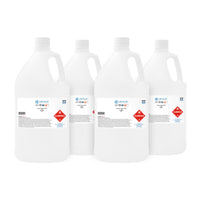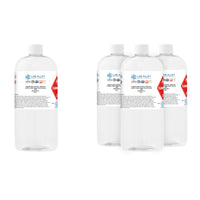Life Sciences

According to Precedence Research, the biotechnology market size is expected to surpass around US$ 1,683.52 billion by 2030, and Lab Alley plans to help meet those growing demands.
Lab Alley sells supplies, acids, bases, equipment, prepared solutions, dyes, enzymes, concentrated biotech chemicals, solvents, HPLC grade, and ACS grade reagents, buffers, and acids used for analysis, research, and production in biotechnology labs in the United States.
 Marine biology is the branch of life science that studies marine life, or all organisms that live in the ocean and other saltwater environments, like wetlands and estuaries. Ethanol is a commonly used preservative that is effective at preventing growth of bacteria and other microorganisms that can degrade or alter the composition of biological samples. Ethanol is also used for long-term storage of marine organisms and their tissues, which can prevent samples from deteriorating over time and maintain their biochemical composition for future analysis. In addition to preserving samples, ethanol is also used to extract and isolate specific compounds from marine organisms. For example, ethanol can be used to extract pigments from algae or oils from marine mammals for analysis of their fatty acid composition. It is important to note that strict guidelines and regulations are to be followed when using ethanol in research to ensure its safe handling, storage and disposal.
Marine biology is the branch of life science that studies marine life, or all organisms that live in the ocean and other saltwater environments, like wetlands and estuaries. Ethanol is a commonly used preservative that is effective at preventing growth of bacteria and other microorganisms that can degrade or alter the composition of biological samples. Ethanol is also used for long-term storage of marine organisms and their tissues, which can prevent samples from deteriorating over time and maintain their biochemical composition for future analysis. In addition to preserving samples, ethanol is also used to extract and isolate specific compounds from marine organisms. For example, ethanol can be used to extract pigments from algae or oils from marine mammals for analysis of their fatty acid composition. It is important to note that strict guidelines and regulations are to be followed when using ethanol in research to ensure its safe handling, storage and disposal. Triton X-100 is a commonly used surfactant in the life sciences industry. Surfactants are compounds that lower surface tension between two liquids or between a liquid and a solid. Triton X-100 is nonionic, which means it does not carry a net electrical charge. One primary application of Triton X-100 is in the cell lysis process where cells are broken open to release their contents. This allows researchers to extract DNA, RNA, and other biomolecules from within the cell. Some other uses include a solubilizing agent for membrane proteins, a stabilizing agent for membranes and antibodies, and also as a component of cell culture media.
Triton X-100 is a commonly used surfactant in the life sciences industry. Surfactants are compounds that lower surface tension between two liquids or between a liquid and a solid. Triton X-100 is nonionic, which means it does not carry a net electrical charge. One primary application of Triton X-100 is in the cell lysis process where cells are broken open to release their contents. This allows researchers to extract DNA, RNA, and other biomolecules from within the cell. Some other uses include a solubilizing agent for membrane proteins, a stabilizing agent for membranes and antibodies, and also as a component of cell culture media. Ethyl Acetate is another commonly used solvent in the life sciences industry with a wide range of different applications. It is often used in the extraction of plant and animal tissues, such as natural products, lipids, and other biomolecules. This process is commonly used in the discovery and development of new drugs. Ethyl Acetate is also used as a solvent in chromatography, which is a technique used to separate and purify complexmixtures of compounds. Histologically, ethyl acetate can be used as a fixative to preserve tissue structure and prevent degradation of biomolecules such as proteins and nucleic acids. It can also be used as a cleaner to sanitize lab equipment.
Ethyl Acetate is another commonly used solvent in the life sciences industry with a wide range of different applications. It is often used in the extraction of plant and animal tissues, such as natural products, lipids, and other biomolecules. This process is commonly used in the discovery and development of new drugs. Ethyl Acetate is also used as a solvent in chromatography, which is a technique used to separate and purify complexmixtures of compounds. Histologically, ethyl acetate can be used as a fixative to preserve tissue structure and prevent degradation of biomolecules such as proteins and nucleic acids. It can also be used as a cleaner to sanitize lab equipment.


















